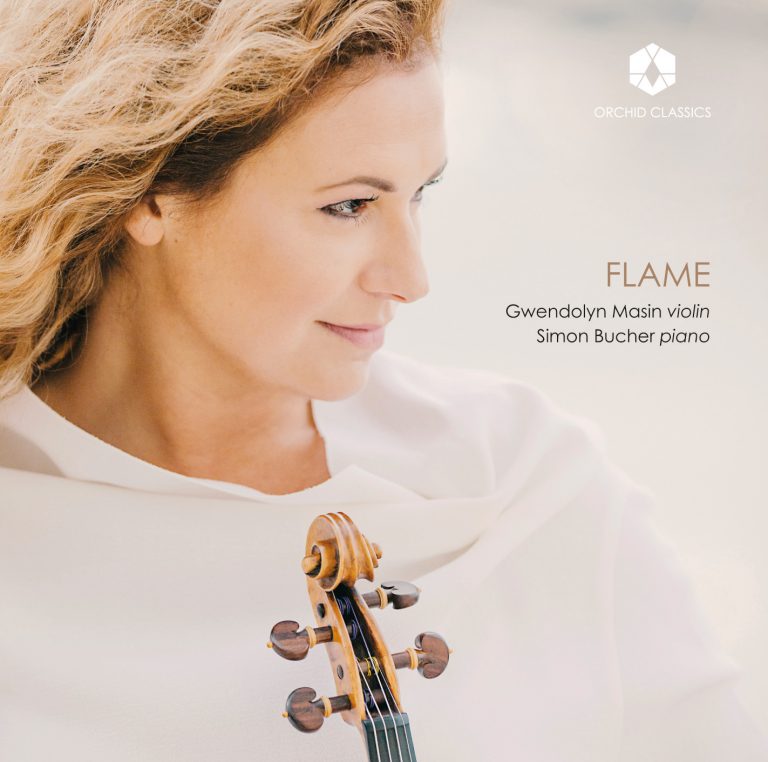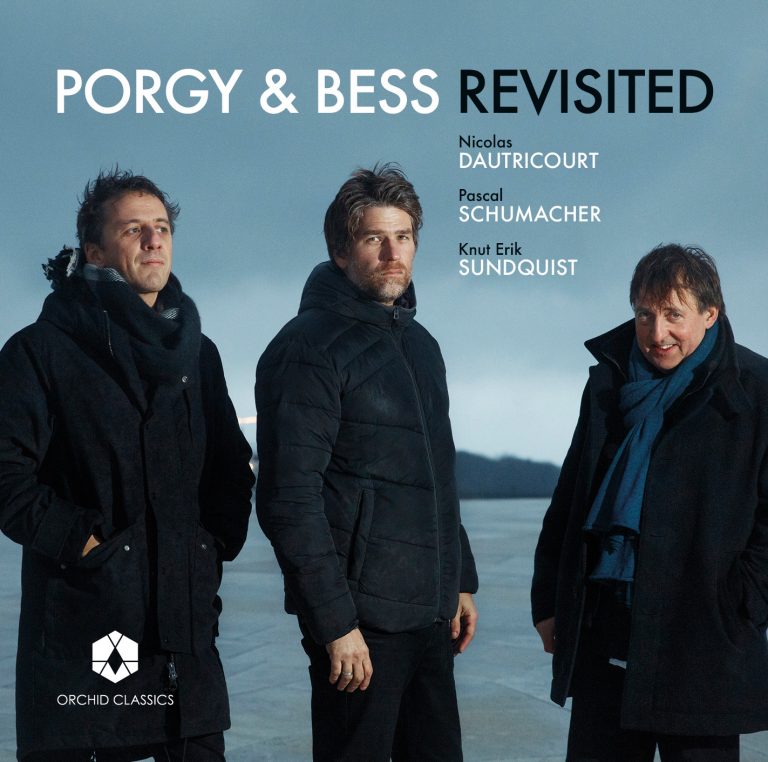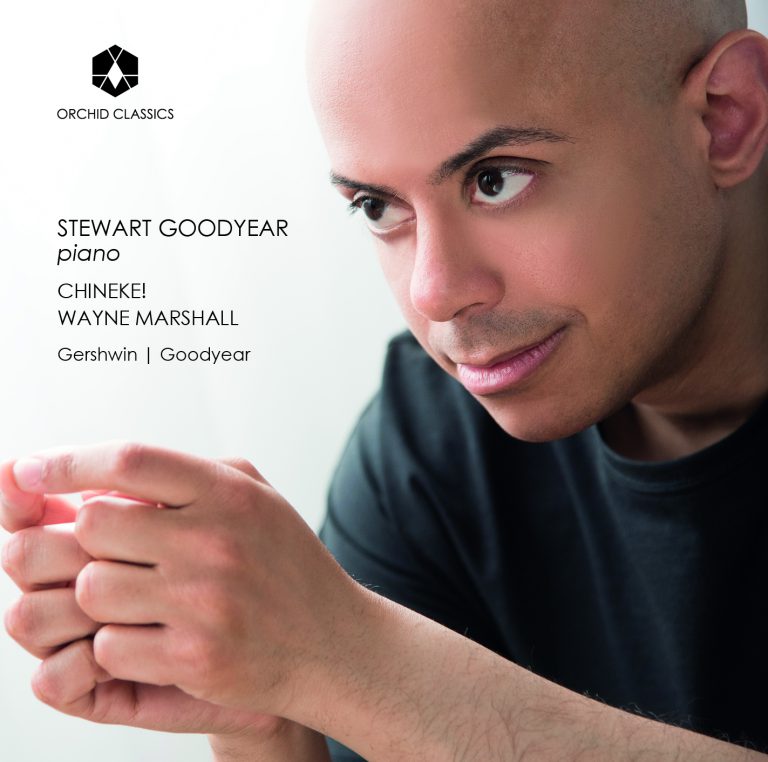Artist Led, Creatively Driven

West Side Story
Gwendolyn Masin, violin
Melisma Saxophone Quartet
Release Date: November 6th
ORC100145
Leonard Bernstein (1918-1990)
West Side Story
1 Prologue 4.57
2 Jet Song 0.54
3 Blues 1.45
4 Somewhere 2.12
5 Procession & Nightmare 1.26
6 Scherzo 1.17
7 Mambo 2.18
8 Cha-Cha 1.37
9 I Feel Pretty 2.10
10 Maria 2.38
11 Cool 1.15
12 America 2.36
13 One Hand,One Heart 3.00
14 Gee, Officer Krupke 2.02
15 Tonight 3.53
16 A Boy Like That 1.33
17 I Have A Love 2.20
18 The Rumble 1.59
19 Finale 2.08
Recorded live at the GAIA Music Festival, Switzerland
Performers: Gwendolyn Masin, David Cristóbal Litago,
Marijke Schröer, Henriette Jensen, Jonas Tschanz
West Side Story is now so famous, and so frequently imitated – to the point of cliché – that our sense of its significance risks being distorted. Perhaps mild by today’s standards, the Broadway musical was ahead of its time, bringing edginess to musical theatre with its frank references to sex, violence, and racial tensions. This retelling of Shakespeare’s Romeo and Juliet, set in New York’s Upper West Side in the 1950s, brought together two of the greatest minds in the genre: Leonard Bernstein (1918-1990) and, making his Broadway debut as a writer, Stephen Sondheim (b.1930). Sondheim’s pithy lyrics, peppered with suggestive slang, were set by Bernstein to music that stretches tonality, often in a brassy, brash, visceral style full of jazz and Latin dance influences.
Bernstein had already cut his teeth on this kind of music in his only film score, On the Waterfront (1954), which anticipated the grittiness and snarl of West Side Story. The idea for the musical was suggested in 1947 by Jerome Robbins, who asked Bernstein and playwright Arthur Laurents to develop an updated version of Romeo and Juliet involving rival Roman Catholic and Jewish families in Manhattan’s Lower East Side. What began as East Side Story evolved to reflect the issue of turf wars between teen gangs, shifting to New York’s West Side and its conflicts between Americans and Puerto Rican immigrants. Laurents persuaded Sondheim to collaborate with Bernstein, and the result, West Side Story, was premiered in 1957, with the 1961 film version going on to win ten Academy Awards.
One of the most remarkable aspects of West Side Story is Bernstein’s orchestration, full of colour and character, so it is something of a feat to capture the essence of the original in a chamber arrangement, as arranger Henk Huizinga has done here. Chamber music is often described in conversational terms, as an intimate dialogue between protagonists, and this arrangement takes things a step further, with the musical’s main characters represented by the instruments – who also, between them, provide the accompaniment. It’s an extraordinary achievement, and the unusual combination of violin and saxophone quartet works superbly: the violin soars, often taking the main vocal line and sometimes playing at a higher pitch than the melodies of the original score to add emphasis; the winds show their versatility with sonorities that are by turns earthy and delicately attenuated. The baritone saxophone even fools the ear into thinking that it could be a cello, especially when it duets with the violin.
In this version, the movement order does not follow the exact chronology of West Side Story, but reflects its story arc while creating contrast between lighter and darker numbers. Beginning with an unmistakeable opening flourish, the ‘Prologue’ sets the scene, introducing many of the themes that will be heard later in the musical and establishing the ongoing oscillation between romance and threat. The ‘Jet Song’ follows during which, in the musical, we meet the members of the Jets, the hero Tony’s gang, and they pledge allegiance to one another; here, the violin takes the principal melodic line. This leads seamlessly into a raunchy ‘Blues’, heard at the Dance at the Gym, where the gangs socialise and exchange taunts. Then comes one of the key numbers in the whole work, ‘Somewhere’, based on a hopeful love duet for the leads, Tony and Maria. The violin sings the increasingly ardent melody, and the wind quartet creates an almost organ-like sonority, emphasising the sense that the love between Tony and Maria is something sacred and separate from the turmoil that surrounds them.
The ‘Procession’ acts as a bridge between this sublime music and the more animated ‘Scherzo’, which in turn takes us to two more of the gym dances: the explosive, contagiously energetic ‘Mambo’, and a graceful ‘Cha-Cha’ (the tune of which has the same contours as Tony’s love song, ‘Maria’). These three movements follow the order chosen by Bernstein for his own Symphonic Dances from West Side Story (arr. 1960). In ‘I Feel Pretty’, Maria’s delight at finding Tony is articulated with a lively theme passed between the instruments, who also replicate the affectionate teasing of her friends describing Maria as: “Modest and pure, polite and refined; well-bred and mature, and out of her mind!” We then hear Tony’s moving paean to his beloved ‘Maria’.
This happiness is short-lived, however, and ‘Cool’ reminds us that tensions continue to fester; the leader of the Jets, Riff, urges his restless friends to “play it cool”. There follows perhaps the most famous number in the whole musical: ‘America’, originally sung by the Puerto Rican Sharks to Sondheim’s lyrics satirising the contrast between the American Dream hoped for by immigrants when they arrive, and the harsh reality that greets them. Another love duet follows: in ‘One Hand, One Heart’, Tony and Maria exchange vows as though conducting an informal marriage ceremony. Again, the quintet arrangement is striking for capturing the tone of the original with soulful saxophone writing and the lyrical beauty of the violin line.
An injection of comedy next, in the form of the Act Two song, ‘Gee, Officer Krupke’. The Jets poke fun at a police officer, listing all the societal ills that supposedly led them to join a gang. The original song ends with what Sondheim later considered to be the best lyric in the musical: “Gee, Officer Krupke – Krup you!” This arrangement showcases the witty side of the violin alongside some humorous honking from the saxes. ‘Tonight’ is another haven of tenderness, contrasted with Anita’s warning in ‘A Boy Like That’, in which she tries to tell Maria of the “sorrow” Tony will bring her, urging her to “stick to your own kind”. The saxophones blend to create a menacing accompaniment over which the violin takes the vocal lines of both women, leading without a break into Maria’s exquisite defence of Tony, ‘I Have a Love’, in which the violin shares the melody with the winds and adds flurries of intricate decoration.
Then comes the fatal ‘Rumble’, its angular, jutting lines evoking the fight that ultimately leads to the death of several key characters, including Tony. Musically, the motifs recall those heard in the ‘Prologue’. The ‘Finale’ is a heartbreaking reprise of ‘Somewhere’ as the lovers say their final farewells. Bernstein’s orchestral suite concludes with a subtle dissonance, suggesting that the story may have ended but that its underlying tensions remain unresolved. Here, though, the harmonies resolve, concluding this arrangement with the implication that grudges have died with those who held them, and the hope that peace may rise from the ashes.
© Joanna Wyld, 2020
Gwendolyn Masin
Gwendolyn Masin is a concert violinist, artistic director, educator, and author. She performs internationally, to high acclaim, and has artistic partnership with musicians, artists, and orchestras worldwide. She also teaches violin and chamber-music masterclasses at institutes and festivals and gives lecture recitals and talks concerning her areas of expertise throughout Europe, Asia, and North America. Masin holds a PhD from Trinity College, Dublin. She is Professor of Violin Studies at the Haute École de Musique de Genève, Switzerland since 2012; Artistic Director of GAIA, an annual music festival held in Switzerland; and she curates various music series in Europe. She is founder of The Exhale, a series of holistic music masterclasses and workshops that foster musical freedom, inspiration as well as musicality as a whole; and co-founder and curator of the International Master Course by Dublin’s National Concert Hall that takes place each summer. Masin is also author of the award-winning book, Michaela’s Music House, The Magic of the Violin, published by Müller & Schade in both English and German. She considers music to be her perpetual companion; her life feeds and informs her love for it and vice-versa. This love, coupled with her immense sense of wonder and curiosity, breathe a unique and distinctly personal touch to every collaboration, performance, and project which she is involved with. Her most recent album for Orchid Classics, entitled FLAME, was released in 2017.
For more information about Gwendolyn, visit www.gwendolynmasin.com.
Melisma Saxophone Quartet
David Cristóbal Litago, Marijke Schröer, Henriette Jensen, Jonas Tschanz
The Melisma Saxophone Quartet’s international synergy of four different nationalities has allowed the group to develop a unique musical language whilst consistently dazzling audiences with their refreshing brand of musical interpretation. Since its formation in Amsterdam in 2009, the quartet has been invited to numerous festivals and concert series throughout Europe and performed on several extended tours across China and Mexico. Melisma has played in great concert halls such as “Concertgebouw” in Amsterdam, and the “NCPA – National Center of Performing Arts” in Beijing. The quartet’s performances have been recorded and broadcast by various national radio stations.
In 2011, the four musicians reached the finals at the 7th Osaka International Chamber Music Competition in Japan – one of the world’s most important chamber music competitions.
The quartet has collaborated with several other outstanding musicians, creating and performing programmes for saxophone quartet and piano, and saxophone quartet and organ, and in so doing, continually explores new directions in repertoire. Melisma released its debut album in 2015 with music by J.S. Bach, E. Grieg, G. Ligeti and the Dutch composer Guillermo Lago.
For more information about the Melisma Saxophone Quartet, visit www.melismaquartet.com.









